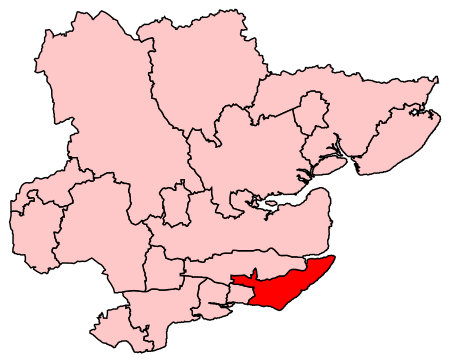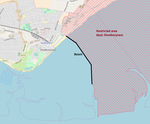Rochford and Southend East (UK Parliament constituency)
Constituencies of the Parliament of the United Kingdom established in 1997EngvarB from October 2013Parliamentary constituencies in EssexPolitics of Southend-on-Sea

Rochford and Southend East is a constituency represented in the House of Commons of the UK Parliament since 2005 by Sir James Duddridge, a Conservative.Under the 2023 Periodic Review of Westminster constituencies, the constituency will only be subject to relatively minor boundary changes (including the loss of St Luke's ward to Southend West), but is to be renamed Southend East and Rochford - to be first contested at the next general election.
Excerpt from the Wikipedia article Rochford and Southend East (UK Parliament constituency) (License: CC BY-SA 3.0, Authors, Images).Rochford and Southend East (UK Parliament constituency)
Conway Avenue, Essex
Geographical coordinates (GPS) Address Nearby Places Show on map
Geographical coordinates (GPS)
| Latitude | Longitude |
|---|---|
| N 51.55 ° | E 0.81 ° |
Address
Conway Avenue
Conway Avenue
SS3 0DD Essex, Great Wakering
England, United Kingdom
Open on Google Maps









